Standing majestically in the heart of Australia Red Centre, Uluru isn’t just a rock – it’s a living cultural landscape that has captivated visitors for generations. This ancient monolith, rising 348 meters above the surrounding desert plains, represents one of the world most recognizable natural landmarks and holds profound spiritual significance for the Anangu people, who have called this land home for over 65,000 years.
Whether you’re seeking spiritual connection, adventure thrills, or family-friendly experiences, this comprehensive guide reveals the best things to do in Uluru, ensuring your journey to this sacred site becomes truly unforgettable. From witnessing the breathtaking sunrise ceremonies to exploring hidden cultural treasures, we’ll unveil the full spectrum of experiences that make Uluru one of Australia most compelling destinations.
Things to Do in Uluru and the Sacred Heart of the Red Centre
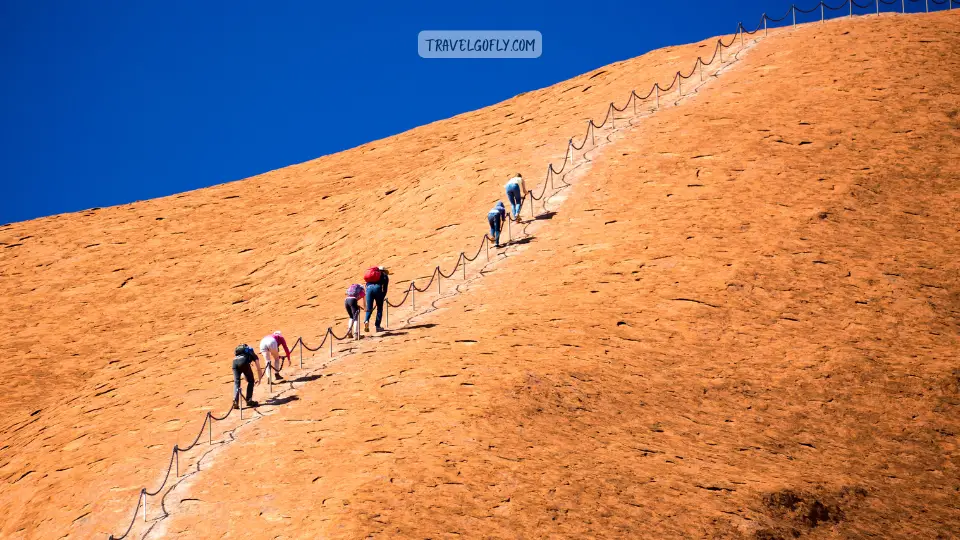 Before diving into the myriad activities awaiting you, it’s essential to understand that Uluru represents far more than a tourist destination. The Anangu people have maintained an unbroken connection to this land through Tjukurpa – the foundation of Anangu law, culture, and religion. Every cave, waterhole, and pathway around Uluru tells ancient stories passed down through countless generations.
Before diving into the myriad activities awaiting you, it’s essential to understand that Uluru represents far more than a tourist destination. The Anangu people have maintained an unbroken connection to this land through Tjukurpa – the foundation of Anangu law, culture, and religion. Every cave, waterhole, and pathway around Uluru tells ancient stories passed down through countless generations.
This understanding shapes how we approach our exploration of Uluru, ensuring our visit honors the cultural significance while creating meaningful memories. The landscape here speaks in whispers of ancient wisdom, and those who listen carefully will discover experiences that transform mere sightseeing into profound personal journeys.
Must-Do Iconic Experiences at Uluru
The complete Uluru Base Walk represents the ultimate way to experience the monolith grandeur, covering 10.6 kilometers of diverse terrain that reveals the rock hidden secrets. This journey typically takes 3.5 to 4 hours, but plan for longer if you’re stopping frequently to absorb the spiritual atmosphere and capture photographs.
Starting from either the Mala Walk car park or Kuniya Walk car park, the path takes you through distinctly different landscapes. The Mala Walk section introduces you to sacred men sites, where you’ll learn about the ancestral hare-wallaby people who traveled to Uluru for important ceremonies. The stories shared here through interpretive signs provide glimpses into the complex spiritual world of the Anangu.
Continuing to the Lungkata Walk segment, the terrain shifts dramatically as you traverse the shadowed southern face of Uluru. Here, massive caves and overhangs create natural galleries where ancient rock art still tells stories of the perentie lizard ancestor. The temperature drops noticeably in these sheltered areas, offering welcome respite during warmer months.
The Kuniya Piti section brings you to the famous Kuniya Walk, where the creation story of the python woman unfolds through the landscape itself. The permanent waterhole at Kuniya Piti has sustained life for millennia, and standing beside these ancient waters connects you directly to the continuous thread of Aboriginal culture.
Discovering Kata Tjuta Hidden Valleys
Twenty-five kilometers west of Uluru, Kata Tjuta meaning “many heads” offers a completely different but equally compelling experience. The Valley of the Winds walk challenges more adventurous visitors with its 7.4-kilometer circuit through narrow gorges between towering rock domes.
This moderately difficult trail rewards hikers with two spectacular lookouts. The first viewing area, accessible after 2.6 kilometers, provides stunning vistas across the surrounding desert plains toward Uluru. The second lookout, reached after completing the full circuit, offers intimate views into the valley heart, where ancient geological forces carved these distinctive formations.
For families or those seeking a gentler introduction to Kata Tjuta, the Walpa Gorge walk presents a 2.6-kilometer return journey into a serene desert oasis. The track follows a natural creek bed between two of the tallest domes, leading to a grove of native plants that create a microclimate unlike anywhere else in the region. Morning visits often reward visitors with wildlife sightings, as many desert creatures seek shelter in the gorge cool recesses.
Chasing the Perfect Sunrise and Sunset
Experiencing Uluru color transformation during sunrise and sunset ranks among Australia most iconic natural phenomena. The rock iron-rich sandstone creates a canvas that shifts from deep purple through brilliant reds to golden amber as light angles change throughout the day.
The designated Uluru Sunrise Viewing Area offers the classic perspective, with clear sightlines across the desert as dawn breaks behind the monolith. Arriving 30 minutes before sunrise allows time to set up photography equipment and witness the gradual awakening of the landscape. The silence broken only by native bird calls creates an almost meditative atmosphere.
Sunset viewing presents multiple options, each offering unique perspectives. The Uluru Sunset Viewing Area provides the traditional frontal view, popular for its reliability and easy access. However, experienced visitors often prefer the Talinguru Nyakunytjaku area near Kata Tjuta, where both rock formations are visible simultaneously, creating dramatic compositions as shadows play across the desert floor.
For photography enthusiasts, consider the less crowded spots along the Ring Road, where foreground elements like native grasses or desert oak trees can frame your compositions. The 20 minutes following sunset often produce the most striking colors as the sky deepens and reflects off Uluru surface.
Cultural Immersion: Connecting with Country
 Learning from Traditional Owners
Learning from Traditional Owners
Anangu-guided tours offer irreplaceable opportunities to understand Uluru through indigenous eyes. These experiences, led by traditional landowners, weave together ecology, spirituality, and practical survival knowledge accumulated over millennia. The Anangu Tours Uluru experience provides intimate group settings where complex cultural concepts become accessible through storytelling and hands-on demonstrations.
During these tours, guides share appropriate elements of Tjukurpa, explaining how ancestral beings shaped the landscape and established the laws that govern Anangu society. You’ll learn to identify native plants used for food and medicine, understand traditional hunting techniques, and gain insights into the sophisticated land management practices that maintained Australia ecosystems for thousands of years.
Creative Expression Through Art
The Maruku Arts workshops at the Cultural Centre provide hands-on opportunities to engage with traditional art forms. Under the guidance of Anangu artists, visitors learn dot painting techniques that encode cultural stories into visual narratives. These workshops go beyond simple craft activities, offering genuine cultural exchange as artists share the symbolism and significance behind their creative expressions.
The two-hour workshops accommodate all skill levels, and participants take home their created artwork along with a deeper appreciation for the complexity of Aboriginal artistic traditions. The experience often sparks ongoing interest in indigenous Australian art, encouraging visitors to seek out galleries and cultural centers in their home regions.
Traditional Food and Bush Medicine
Bush tucker tours led by Anangu guides introduce visitors to the incredible diversity of edible and medicinal plants thriving in what might appear to be harsh desert. These experiences reveal sophisticated understanding of seasonal availability, sustainable harvesting practices, and preparation methods that maximize nutritional value.
Guides demonstrate traditional techniques for gathering native seeds, fruits, and roots while explaining the cultural protocols surrounding food collection. You’ll taste native fruits like kutjera (desert raisins) and learn about plantas like the desert oak, whose seeds sustained generations during long ceremonies at Uluru.
Adventure and Unique Perspectives
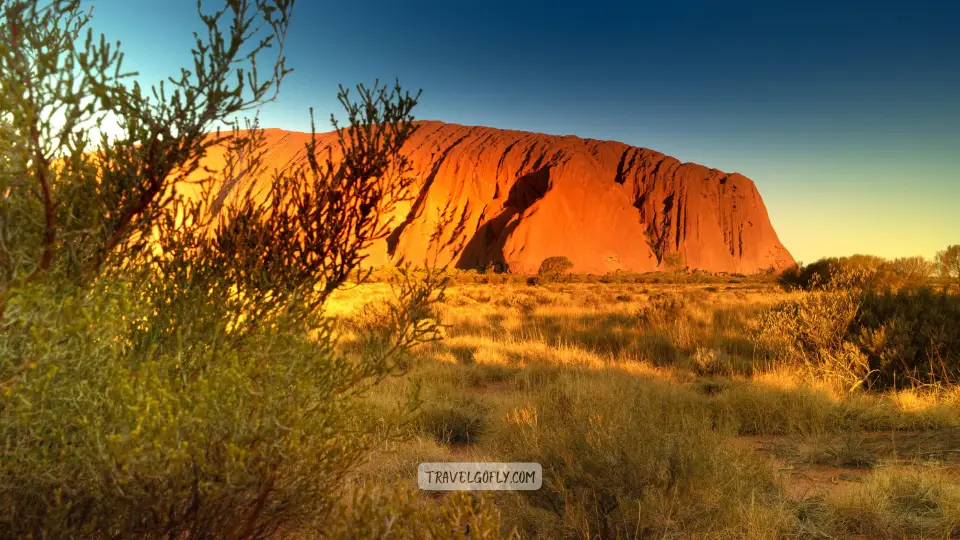 Soaring Above the Sacred Landscape
Soaring Above the Sacred Landscape
Scenic flights provide perspectives on Uluru scale and setting that ground-level experiences cannot match. Helicopter tours offer intimate aerial experiences, circling the monolith at close range while professional pilots share geological insights and point out features invisible from the ground.
Fixed-wing aircraft flights cover broader territory, including both Uluru and Kata Tjuta in longer circuits that reveal the relationship between these formations and the surrounding landscape. The 45-minute service typically includes Mount Conner, the third major monolith in the region, often called Uluru “sister rock.”
Early morning or late afternoon flights capitalize on optimal lighting conditions when shadows emphasize the rock formations dramatic contours. Many operators offer doors-off helicopter experiences for serious photographers, though these options require advance booking and weather permitting.
Desert Expeditions by Camel
Camel rides provide a uniquely Australian adventure that connects visitors to the practical transportation methods used by early European explorers. These gentle giants, originally imported from the Middle East in the 19th century, now roam wild across central Australia arid regions.
Sunrise and sunset camel tours offer the most magical experiences, as these intelligent animals move silently across the desert while the landscape transforms around you. The elevated perspective from camelback provides excellent photography opportunities, and many riders find the rhythmic motion surprisingly meditative.
Day-long camel expeditions venture further into the surrounding country, including visits to lesser-known waterholes and rock formations. These extended journeys include traditional campfire meals and often conclude with stargazing sessions that showcase the brilliant night skies possible in areas with minimal light pollution.
Harley Davidson Desert Tours
For visitors seeking high-speed adventure, Harley Davidson tours provide an exhilarating way to cover ground quickly while feeling the desert wind. These guided tours follow scenic routes between major attractions, with stops at lookouts and cultural sites along the way.
The distinctive sound of Harley engines echoes dramatically across the open landscape, creating an unmistakably American experience in the heart of Australia. Tours cater to different experience levels, from pillion passenger rides for those without motorcycle licenses to self-guided adventures for experienced riders.
Safety equipment and brief training sessions ensure all participants feel comfortable before departing. Many riders report that the freedom and excitement of motorcycle touring perfectly complements the spiritual aspects of visiting Uluru, creating memorable contrasts between high-speed thrills and peaceful contemplation.
Budget-Friendly and Family Activities
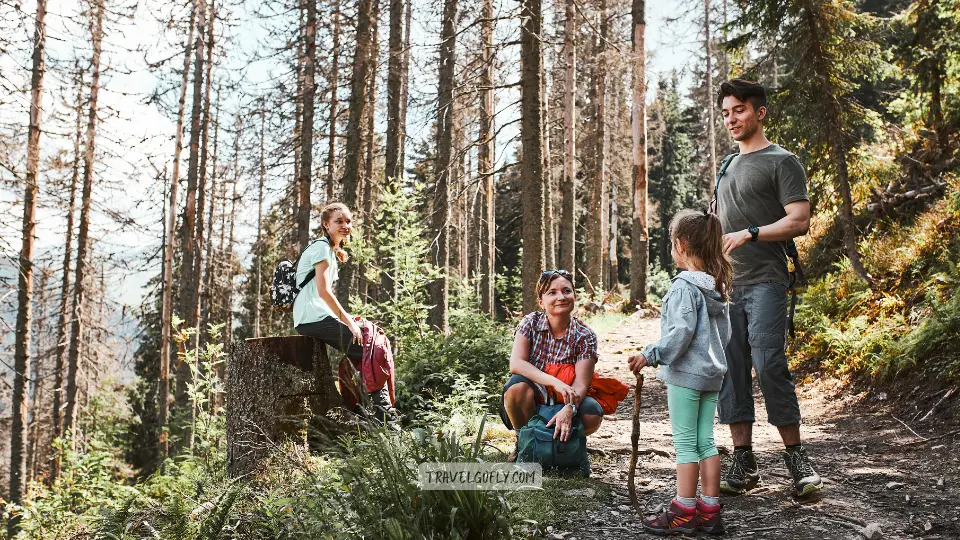 Self-Guided Exploration
Self-Guided Exploration
The well-maintained trail system around Uluru allows independent exploration at your own pace without guided tour costs. Detailed interpretive signs along the walks provide cultural and ecological information, making self-guided experiences educational as well as cost-effective.
The free Uluru Audio App, available in multiple languages, enhances self-guided walks with traditional stories, scientific explanations, and practical information. Downloaded before your visit, the app works offline and includes GPS functionality to trigger location-specific content automatically.
Picnicking in designated areas offers relaxing interludes during longer walk cycles. The sunset viewing area includes picnic tables and BBQ facilities, allowing families to combine dinner with the evening light show. Morning picnics at the sunrise viewing area provide peaceful starts to active days.
Ranger-Led Programs
Parks Australia conducts free ranger-led programs throughout the year, offering expert insights into Uluru natural and cultural significance. These presentations cover topics ranging from astronomy and geology to flora and fauna, delivered by passionate staff with extensive local knowledge.
The programs adapt to seasonal conditions and current events, ensuring fresh content for repeat visitors. Special school holiday programs cater specifically to children, combining education with interactive activities that maintain young attention spans.
Evening programs often coincide with optimal stargazing conditions, as rangers introduce visitors to southern hemisphere constellations visible from Uluru. The minimal light pollution creates exceptional astronomical viewing opportunities rarely available in urban environments.
Stargazing and Night Experiences
 The dark skies above Uluru provide some of the world finest stargazing conditions, with minimal light pollution allowing celestial objects invisible in cities to shine brilliantly. On clear nights, the Milky Way appears as a luminous river flowing across the entire sky, while planets and satellites trace paths between the stars.
The dark skies above Uluru provide some of the world finest stargazing conditions, with minimal light pollution allowing celestial objects invisible in cities to shine brilliantly. On clear nights, the Milky Way appears as a luminous river flowing across the entire sky, while planets and satellites trace paths between the stars.
Specialized astronomy tours utilize high-quality telescopes to reveal details of celestial bodies invisible to naked-eye observation. Experienced guides explain both Western astronomical knowledge and Aboriginal star lore, providing dual perspectives on the same cosmic phenomena.
The Southern Cross, Australia most recognizable constellation, appears particularly brilliant from Uluru, along with the Magellanic Clouds – satellite galaxies of our own Milky Way visible only from southern latitudes. Photography workshops teach techniques for capturing star trails and nighttime landscapes, with Uluru silhouette creating dramatic foregrounds.
Photography Mastery at Uluru
 Technical Considerations
Technical Considerations
Photographing Uluru successfully requires understanding both technical camera settings and artistic composition principles. The intense contrast between bright sky and shadowed rock faces challenges automatic camera settings, making manual exposure control essential for optimal results.
Early morning and late evening provide the best natural lighting conditions, when longer shadows add depth and dimension to compositions. The “golden hour” immediately after sunrise and before sunset produces warm light that enhances Uluru natural red coloration.
Circular polarizing filters help manage reflections and enhance color saturation, particularly important when photographing Uluru sandstone surfaces. Graduated neutral density filters balance exposure between bright skies and darker foregrounds, essential for capturing detail in both areas simultaneously.
Composition Strategies
Beyond the classic wide-angle shots showcasing Uluru full magnificence, intimate details reveal the rock complex character. Close-up photography of surface textures, cave paintings, and weathering patterns tells stories of geological time and cultural continuity.
Foreground elements add depth and context to landscape compositions. Native vegetation, water features, or walking paths create leading lines that draw viewers eyes toward Uluru. Desert wildflowers, particularly abundant after rare rainfall, provide colorful contrasts to the dominant red tones.
Different focal lengths produce dramatically different emotional impacts. Wide-angle lenses emphasize Uluru massive scale and environmental context, while telephoto lenses isolate specific features and compress perspective, making distant features appear larger and more prominent.
Practical Planning for Your Uluru Adventure
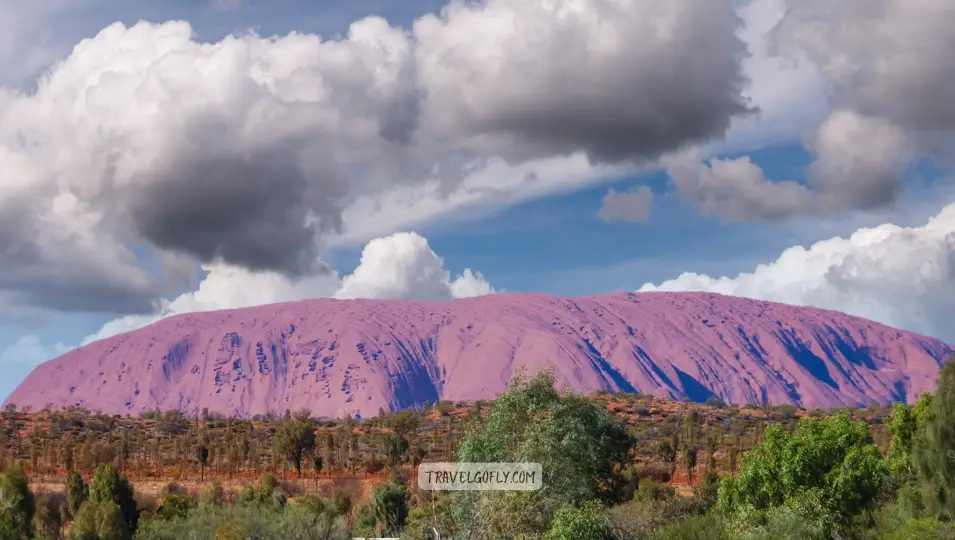 Seasonal Considerations
Seasonal Considerations
Uluru desert climate creates distinct seasonal experiences, each offering unique advantages. April through September represents peak visiting season, with comfortable daytime temperatures averaging 20-25°C and cool evenings perfect for outdoor activities.
Summer months (December-February) challenge visitors with extreme heat often exceeding 35°C, but reward early risers and late afternoon adventurers with spectacular thunderstorms and occasional wildflower blooms following rare rainfall. Many walking tracks close during midday hours for safety reasons.
Winter (June-August) provides ideal hiking conditions with crisp mornings and mild afternoons, though nights can drop below 5°C, requiring warm clothing for evening activities. This season offers the clearest skies for stargazing and the most comfortable conditions for extended outdoor activities.
Transportation and Access
Jetstar Airways operates direct flights from major Australian cities to Ayers Rock Airport, located just 20 minutes from Ayers Rock Resort. Flight times range from 2 hours from Adelaide to 3.5 hours from Sydney, making day trips technically possible though not recommended for meaningful cultural engagement.
Vehicle rental provides maximum flexibility for exploring the region independently. The sealed Ring Road allows complete circumnavigation of Uluru, with multiple parking areas providing access to walks and viewing areas. High-clearance vehicles aren’t necessary for standard tourist activities, though 4WD vehicles access remote camping and photography locations.
Tour operators offer various transportation options, from large coach tours providing structured itineraries to small group tours allowing personalized experiences. Many operators include hotel pickup and drop-off services, eliminating parking concerns during busy periods.
Accommodation Options
Ayers Rock Resort provides the only accommodation within the national park, offering options from basic camping to luxury hotels. The Desert Gardens Hotel provides comfortable mid-range accommodation with native gardens showcasing desert-adapted plants from around Australia.
Sails in the Desert represents the resort premium option, featuring spacious rooms, multiple restaurants, and recreational facilities including swimming pools and spa services. The hotel architecture incorporates passive cooling design principles, maintaining comfort while respecting environmental constraints.
Budget travelers can choose from the Outback Pioneer Hotel & Lodge or designated camping areas with powered and unpowered sites. Camping facilities include modern amenities like heated swimming pools, BBQ areas, and camp kitchens, making outdoor accommodation comfortable even for families.
Respecting Cultural Sensitivity
Visiting Uluru requires understanding and respecting Anangu cultural values and land management decisions. Photography restrictions apply to certain sacred sites, clearly marked with signs explaining cultural sensitivities. These restrictions honor ongoing spiritual connections and maintain the integrity of traditional practices.
The Anangu people strongly discourage climbing Uluru, explaining that the climb follows a sacred Dreamtime path not intended for recreational use. Respecting this guidance demonstrates cultural awareness and supports local community values, while alternative activities provide equally meaningful experiences.
Sound management around sacred sites maintains appropriate atmospheres for reflection and cultural connection. Speaking quietly, avoiding loud music, and educating children about appropriate behavior ensures all visitors can experience Uluru spiritual qualities.
Sample Itineraries for Every Traveler
 The One-Day Intensive
The One-Day Intensive
For visitors with limited time, a carefully planned single day can provide meaningful Uluru experiences. Begin with sunrise viewing from the designated area, arriving 45 minutes early to witness the complete color transformation. Following sunrise, complete either the Kuniya Walk to the waterhole or the Mala Walk to learn about ancestral stories.
Mid-morning exploration of the Cultural Centre provides cultural context for your Uluru experience, with exhibits explaining Anangu perspectives on land management, traditional lifestyle, and contemporary challenges. The center air conditioning also provides welcome relief as temperatures rise.
Afternoon rest at your accommodation or resort pools allows energy recovery for evening activities. Late afternoon departure for sunset viewing includes stops at multiple viewpoints along the Ring Road, concluding with the traditional sunset experience at the main viewing area.
The Three-Day Discovery
Extended visits allow deeper engagement with Uluru natural and cultural layers. Day one focuses on cultural immersion through guided tours, Cultural Centre exploration, and gentle walks that introduce the landscape gradually.
Day two emphasizes physical challenges and adventure activities, including the full base walk or Valley of the Winds circuit at Kata Tjuta. These longer walks reveal Uluru geological complexity and provide opportunities for wildlife observation and photography.
Day three combines relaxation with unique experiences like scenic flights, camel tours, or Harley Davidson adventures. Conclude your visit with a premium dining experience at Sounds of Silence or Tali Wiru, where gourmet cuisine meets astronomical education under brilliant desert skies.
Family-Focused Adventures
Families with children benefit from shorter activity blocks combined with engaging educational components. Child-friendly walks include the Uluru Base Walk in segments, allowing rest stops and exploration of interesting features without exhausting young legs.
Interactive experiences like dot painting workshops and bush tucker tours capture children attention while providing cultural education. Many activities include hands-on elements that help youngsters retain information and feel actively engaged rather than passively observing.
Resort facilities provide essential downtime for families, with swimming pools, playgrounds, and informal dining options allowing children to expend energy and parents to relax. Evening stargazing sessions often fascinate children who rarely see brilliant night skies in urban environments.
Essential Packing for Desert Adventures
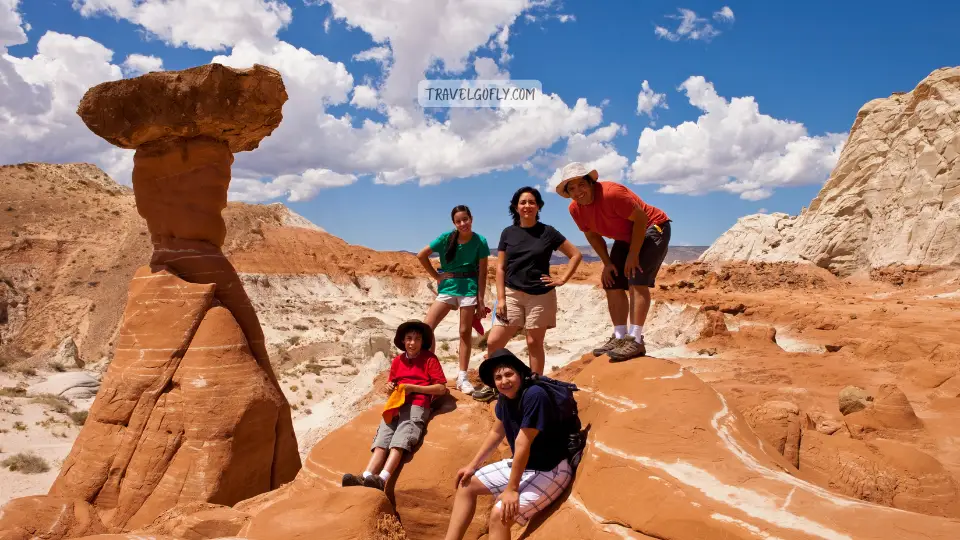 Climate Protection
Climate Protection
Desert conditions require specialized clothing and equipment to ensure comfort and safety. Wide-brimmed hats provide essential sun protection, while lightweight, long-sleeved shirts shield skin from UV radiation and potential scratches during bushwalking.
High SPF sunscreen requires frequent reapplication, particularly after swimming or sweating during physical activities. Lip balm with UV protection prevents painful sunburn in an often-overlooked area, while quality sunglasses reduce eye strain and long-term UV damage.
Layered clothing accommodates dramatic temperature variations between day and night. Mornings and evenings can be surprisingly cool, requiring jackets or sweaters, while midday heat demands minimal, breathable clothing.
Hydration and Nutrition
Carrying adequate water represents the single most important safety consideration for Uluru visits. Desert conditions accelerate dehydration, particularly during physical activities, making frequent water consumption essential rather than optional.
Electrolyte supplements help maintain proper body chemistry during extended outdoor activities, particularly important for visitors unaccustomed to extreme heat. Many experienced desert travelers prefer electrolyte tablets or powders to heavy sports drinks.
High-energy snacks provide convenient nutrition during long walks without requiring preparation or cooking facilities. Trail mix, energy bars, and dried fruits offer sustained energy release while remaining stable in high temperatures.
Photography Equipment
Camera batteries drain more quickly in extreme temperatures, making spare batteries or portable charging devices essential for photography enthusiasts. Memory cards with high capacity prevent storage limitations during extended shooting sessions.
Protective equipment shields valuable camera gear from dust and sand that can damage sensitive mechanisms. UV filters protect lenses while cleaning kits remove accumulated dust and debris that can affect image quality.
Sturdy tripods enable sharp landscape photography during low-light conditions, essential for capturing sunrise, sunset, and star photography. Remote shutter releases or camera timer functions prevent camera shake during long exposures.
Safety Considerations in the Desert

Heat Management
Recognizing heat-related illness symptoms enables prompt treatment and prevents serious medical complications. Early signs include increased thirst, fatigue, and reduced sweating – signals that the body cooling mechanisms are becoming overwhelmed.
Timing activities during cooler hours maximizes comfort and reduces health risks. Early morning and late afternoon periods offer ideal conditions for physical activities, while midday hours suit indoor cultural experiences and rest periods.
Emergency preparedness includes carrying basic first aid supplies and knowing evacuation procedures for serious incidents. Mobile phone coverage exists throughout most tourist areas, though emergency beacons provide additional security for remote area exploration.
Wildlife Awareness
Australia desert regions host various wildlife species that require respectful observation rather than interaction. Dingoes occasionally appear near tourist areas but should never be fed or approached, as this behavior modification can endanger both animals and future visitors.
Reptile species including various lizards and occasional snakes inhabit the area but rarely pose threats to conscious, careful visitors. Wearing closed-toe shoes and watching step placement during off-trail exploration prevents most human-wildlife conflicts.
Insect life peaks during warmer months and after rainfall, when mosquitoes and flies can be numerous. Insect repellent and appropriate clothing provide effective protection without requiring significant preparation or expense.
Frequently Asked Questions
How many days should I spend at Uluru? A minimum of two full days allows meaningful engagement with both Uluru and Kata Tjuta, including cultural experiences and major walks. Three to four days provide opportunities for adventure activities, relaxation, and deeper cultural immersion without feeling rushed.
Can I climb Uluru? No, the Anangu people, traditional owners of Uluru, strongly discourage climbing and the climb officially closed in October 2019. This decision respects the sacred nature of the site and protects both cultural values and environmental integrity. Alternative activities provide equally rewarding experiences without cultural insensitivity.
What’s the best time of year to visit Uluru? April through September offers optimal conditions with comfortable temperatures and clear skies. July represents peak season with ideal weather but higher accommodation costs and larger crowds. Shoulder seasons (April-May and September-October) provide excellent compromises between weather and crowd levels.
Is Uluru suitable for families with young children? Absolutely! Family-friendly activities include shorter walks, cultural workshops, and resort facilities designed for children. Ranger programs and interactive exhibitions at the Cultural Centre engage young minds while providing educational content. Resort pools and playgrounds offer essential downtime for active families.
What should I wear when visiting Uluru? Lightweight, breathable clothing with long sleeves protects from sun exposure while maintaining comfort. Sturdy walking shoes with ankle support prevent injuries on uneven ground. Wide-brimmed hats and high SPF sunscreen are essential year-round.
How much does it cost to visit Uluru? Park passes cost $25 for adults (valid for three days), while children under 17 enter free. Accommodation ranges from camping ($15-30 per night) to luxury hotels ($400+ per night). Tours and activities vary widely, from free ranger programs to premium dining experiences exceeding $200 per person.
Can I book activities upon arrival? While some activities accept walk-in bookings, advance reservations ensure availability, particularly during peak seasons. Popular experiences like scenic flights and premium dining often book out weeks in advance. Cultural centre activities and walking tracks require no advance booking.
Is Uluru worth visiting if I only have one day? While longer visits provide deeper experiences, a well-planned single day can include sunrise viewing, cultural centre exploration, and sunset viewing. Focus on quality experiences rather than attempting everything, and consider returning for extended exploration in the future.
Your Uluru Adventure Awaits
Standing before Uluru as the ancient landscape awakens with dawn first light represents one of travel most profound experiences. This sacred monolith offers countless ways to connect with Australia cultural heritage, natural wonders, and spiritual depth, ensuring every visitor discovers personally meaningful moments.
Whether seeking adventure through scenic flights and camel rides, cultural understanding through Anangu-guided tours and art workshops, or simple appreciation through sunrise contemplation and stargazing, Uluru accommodates diverse interests and travel styles. The key lies in approaching this remarkable place with respect, openness, and willingness to learn from landscapes and cultures that have endured for millennia.
Plan your Uluru adventure with realistic expectations, appropriate preparation, and cultural sensitivity. This ancient land rewards thoughtful visitors with experiences that extend far beyond typical tourist attractions, creating memories and insights that enrich perspectives long after returning home.
As you prepare for your journey to the Red Centre, remember that Uluru offers not just sightseeing opportunities but chances for genuine connection with one of the world most spiritually significant landscapes. Your adventure in the heart of Australia awaits, promising experiences as timeless and transformative as the ancient monolith itself.

 Circumnavigating the Base: The Uluru Base Walk
Circumnavigating the Base: The Uluru Base Walk